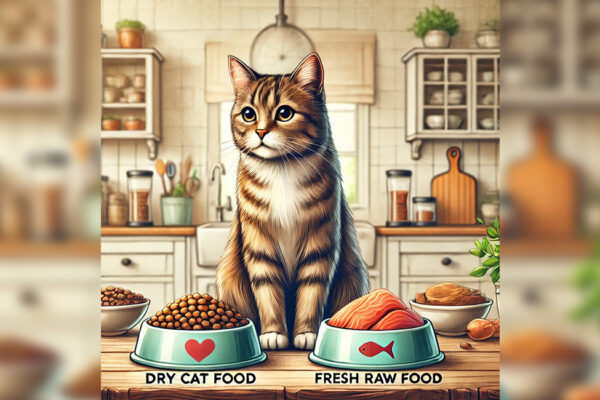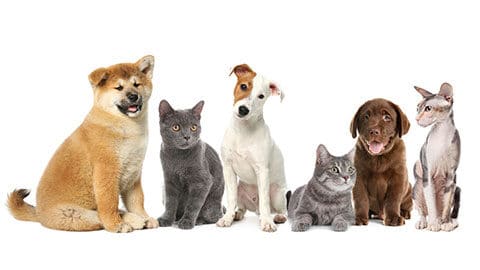
The following is a guest blog by Richard A. LeCouteur, DVSc, PhD, Diplomate ACVIM(Neurology), Diplomate ECVN, FANZCVS (Hon. Causa), MRCVS, Professor Emeritus, Neurology & Neurosurgery, University of California, Davis
He and Tracie discuss this on Dog Talk. Listen to the episode HERE.
---------
For many cat owners, the relationship with dry cat food starts less as a thoughtful decision and more as a marriage of convenience. It’s easy to follow the crowd, and with no objections from veterinarians, the choice feels validated. Labels boasting claims like veterinarian-recommended and meets AAFCO standards further reinforce the decision.
However, as the years pass, the perceived benefits of dry food for cats, such as convenience and affordability, begin to crumble under scrutiny.
Wake-Up Call
When persistent health issues in cats arise, many owners start to question whether diet could be a contributing factor. Conventional advice often points to “prescription” dry foods, but when those fail to address the problems, curiosity leads to deeper investigation.
Research into feline nutrition often reveals an unsettling truth: cats are obligate carnivores, designed to thrive on diets that mimic their natural prey.
Wild diets are high in protein and moisture, and low in carbohydrates. By contrast, dry foods are essentially ultra-processed, meat-flavored cereal (definition: a grass cultivated for its edible grain), often ill-suited to meet a cat’s biological needs.
Recognizing the Problem
The first red flag with dry food is its lack of moisture. Cats evolved to obtain most of their water intake through their food, not from drinking water. Feeding dry food leads to chronic dehydration, which can contribute to urinary tract issues, kidney problems, and poor digestion.
Another major concern is the high carbohydrate content in dry food. Cats have no biological need for carbohydrates and struggle to process them efficiently. This can lead to obesity, diabetes, and other metabolic disorders.
Armed with this knowledge, many cat owners begin experimenting with alternatives, often starting with a trial separation from dry food.Finding a Better Path
For those who seek answers, guidance often comes from communities of feline nutrition enthusiasts and experts. These networks introduce cat owners to the concept of species-appropriate diets, including adding homemade raw food to a cat’s diet. At first, the idea of preparing raw meals at home may seem overwhelming, but with proper education and resources, it becomes manageable.
The results of switching to a species-appropriate diet are often dramatic. Cats transitioning away from dry food to balanced, high-moisture, protein-rich meals frequently show improvements in coat condition, energy levels, and overall health. Chronic health issues, such as digestive problems, may resolve entirely.
Lessons Learned
Breaking up with dry food reveals important insights about feline nutrition:
- Moisture is Crucial: The water missing from dry food is not a filler but an essential component of a healthy diet. Chronic dehydration caused by dry food can lead to significant health issues.
Carbohydrates are Harmful: The high carb content in dry food disrupts glucose balance and contributes to conditions like obesity and diabetes.
Individual Needs Matter: Every cat is unique, and dietary requirements vary depending on age, health, and other factors. What works for a healthy young adult cat may not be appropriate for a senior cat with kidney disease.
Another key lesson is humility. Nutrition science is ever evolving, and even those who feed homemade diets must acknowledge that these meals, while beneficial, are not perfect replicas of a wild cat’s natural prey. Careful adjustments, curiosity and ongoing education are necessary.
Rick’s Commentary
Breaking up with dry food isn’t an easy step. The convenience of filling a bowl and walking away is hard to deny. Considering a change of diet for your cat can feel overwhelming. However, the rewards make the effort worthwhile.
For those considering a similar change, consulting with a veterinarian experienced in species-appropriate diets or a feline nutrition expert is crucial. A well-balanced diet can transform a cat’s health and deepen the bond between pet and owner.
This journey highlights the importance of questioning the status quo. Moving away from dry food isn’t just a dietary shift, it’s an act of love and care for a cat’s well-being. Sometimes, the most difficult decisions turn out to be the best ones.

